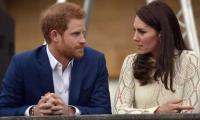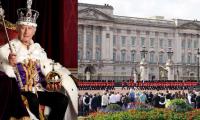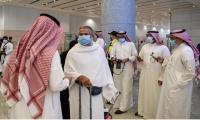ISLAMABAD: Chairman Pakistan Tehreek-e-Insaf (PTI) Imran Khan’s income tax is decreasing by average 89% each year without registering any decline in his annual income that, tax return shows, mostly comes from abroad and agricultural sources, analysis of his six-year taxes indicate.
A paltry amount of Rs76,244 income tax for the year 2015 raised eye-brows and left public at large wondering how Khan manages his living style and palatial residence in Islamabad and Lahore in an income drawing this little amount of tax. In 2014, he paid Rs218,237.
Upon inquiry, PTI Secretary Information, Naeemul Haq, explained that the party chairman had paid Rs550,000 tax on agricultural income, a source of earning largely declared by the rich to hide undeclared earning.
That may not necessarily be true in Khan’s case; nevertheless, the fact remains that this modus operandi is frequented by the fat cats in a country where one percent of population is in the tax net.
His biggest financial supply line is foreign earning. The PTI chairman received around Rs10 million (precisely Rs9,815,000) from abroad during July 2014-June 2015, according to his tax return shared with The News by the party’s spokesman.
What is the source of foreign income? He writes articles and sometimes does paid commentary on cricket matches, argues Naeemul Haq.
This explanation is in contrast with domestic politics that has kept Khan intensely busy since his famous gathering in Lahore on October 30, 2011. He remained engaged in election campaign and later into agitation rallies and dharna politics consuming a lot of energy and time with little to no space for foreign earning.
His third source of income is salary that he probably draws from the party. It has been declared Rs1,331,622 in the return filed for the year 2015 out of which Rs410,000 is tax-exempted.
His tax consultant is presently in Saudi Arabia for performing Hajj, said Naeemul Haq, and will answer all questions upon return. Questions have not been raised for the first time.
When Khan was confronted about his tax issues during dharna days, he had promised to answer these questions during his speech at the container where nobody had the opportunity to counter question. Even the dharna ended without hearing on this count from him, so the questions are still unanswered.
Khan’s tax returns have not evoked unwanted attention for the first time. If the last four years are taken into consideration, the PTI chief paid the highest tax in 2010 on an income that was the lowest in comparison with the following three years.
While he registered a handsome increase in earnings from 2011-13, it was accompanied with an 80 percent decrease in tax as the business income used to be declared earlier was largely replaced with agriculture and services (outside Pakistan) income.
Another major shift was noted in terms of his changing priorities with regard to the parking of cash. In the beginning, he would keep it at bank and gradually started stashing it elsewhere.
Khan had the maximum cash (Rs6.2 million) in bank account by 2010 when he paid the highest amount of tax i.e. Rs1.8 million over an income of Rs10.6 million.
This contrasted with the minimum bank balance of Rs362,069 in 2011 when he registered the earning of Rs23.50 million, the highest in four years. It accompanied by a drastic cut in his tax as he paid Rs322,110 that year.
In yet another instance, a major difference in tax amount was noted despite the fact that there was a minor variation in the annual income of two separate years.
Apparently, there is 17.34 percent difference in the income that Khan reported in 2010 and 2013 but intriguingly a variation of 83.50 percent in the tax amount has been recorded in the corresponding years.
Khan paid Rs1.85 million tax over the declared income of Rs10.63 million in 2010 whereas his tax drastically reduced (Rs194,936) over relatively bigger income (Rs12.32 million) in 2013.
How did this major cut occur in the tax amount? Khan had declared a sum of Rs8.2 million as income generated through business in 2010 financial year that caused him heavy taxation.
The following year, business income was reduced to Rs546,620 whereas agricultural income and foreign remittances registered an increase. Business income has disappeared, as there is no mention of it in the tax returns of 2012 and 2013.
He paid the highest tax in 2010 of Rs1.85 million over an income of Rs10.63 million generated through business, profit on debt, agriculture, services (outside Pakistan) and property rent. By the close of that financial year, he had almost an equal amount of cash-in-hand (Rs6.8 million) and at bank (Rs6.2 million) each.
The year 2011 noticed the highest earning with Rs23.5 million that was 54 percent more than the previous year. However, tax deduction was 83 percent less than 2010 as he paid only Rs322,110.
The types of earnings mentioned noticed a negligible amount of business income (Rs546,620) and a major increase in agriculture income (from Rs750,000 in 2010 to Rs2.3 million in 2011).
Foreign remittances (charges of the services he offers abroad) jumped from Rs1.1 million in 2010 to Rs19.7 million in 2011. Property rent was also doubled during that financial. This huge outflow of income notwithstanding money in bank at the close of financial year was Rs576,000 that contrasted with Rs1.1 million cash-in-hand.
In 2012, Khan’s declared income was Rs16.1 million and tax paid on it was Rs273,339. A significant change during this year was the absence of any business income.
Profit on debt, agriculture, services (outside Pakistan) and property rent was declared as the source of income. Another noticeable development was an increase of cash in hand that was Rs12.1 million whereas the cash at the bank was Rs2.1million.
He declared Rs12.3 million income in 2013 and paid only Rs194,936 tax on it. Most of the income declared was from agriculture and services (outside Pakistan). That year saw the declaration of the highest amount of cash in hand (Rs13.61 million) whereas Rs381,765 was in bank at the closing of that financial year.
Justice Tariq Mehmood Jahangiri took up Sher Afzal bail plea for hearing
CCP’s announcement made, stating that applicants are required to pay money upfront in order to enroll
According to details, the police took a van filled with female students of medical college to a police station on...
In this image, the logo of the Nowshera Press Club can be seen. — Facebook/Nowshera Press Club/FileNOWSHERA: The...
Senator Sherry Rehman said the PPP had previously extended an offer to the PTI to form a government, but the PTI is...
A division bench comprising Justice Shakeel Ahmad and Justice Dr Khurshid Iqbal heard the petition filed by the KP...







